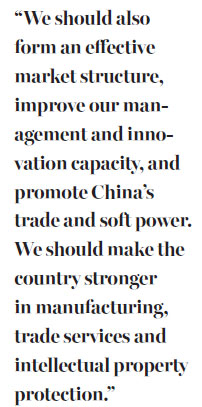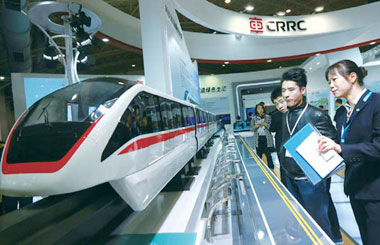High-quality foreign capital still needed
Updated: 2016-01-22 08:38
By Wei Jianguo(China Daily Europe)
|
|||||||||||
Investment opportunities remain in high-end industries and sectors which have been chosen for growth
China's achievement in absorbing foreign investment since it introduced its reform and opening-up policy is obvious around the world. The use of this capital has promoted progress in all areas of society.
Currently, however, the media and the economic world have cooled on foreign investment. There are three misunderstandings.
The first is that China has received enough foreign capital and has no need for more. People with this view tend to believe that China's labor-intensive sectors have lost their competitive edge on the international market, and that the capacity in mid-end and low-end industries such as processing trade need to be reduced.
In fact, China has absorbed too much foreign investment to develop low-end industries, while for high-end industries the foreign capital is not enough. So we should focus on attracting foreign investment to high-end industries.

The second view is that foreign investment will not help China's economy grow, but will help foreign investors seize a greater market share when economic growth slows.
And the third is that some local governments have put foreign investment in second place after economic growth and industrial structure adjustments.
We have to rid ourselves of these outdated ideas before we welcome the second spring of foreign investment. The first spring came 30 years ago, and compared with then, the latest has four differences.
First, the industries are different. In the past, most foreign capital was channeled to labor-intensive industries and went to original equipment manufacturers. This time, foreign investment will come in all sectors, especially the service industry. Sectors such as finance, healthcare, culture, education, telecommunications, Internet and logistics will all open to foreign investment.
Second, local governments previously took a leading role in absorbing foreign investment, but now it will be companies, especially private and international enterprises, which will also play a positive role in improving asset allocation.
Third, the scope of absorbing foreign investment is different. We should connect it with the Belt and Road Initiative, the Yangtze Economic Belt and free trade zone strategies, and the five concepts proposed in the 13th Five-Year Plan (2016-20): innovation, coordination, green, opening-up and sharing.
Fourth, we have a different environment compared with decades ago. Over the past 30 years, we have depended on local governments' preferential policies to attract foreign capital, but now governments will provide a legal environment that is more equitable and respects intellectual property.
This time, we should have a set of supporting policies. Local governments should focus on providing services and protection for intellectual property, providing fair treatment when readjusting the industrial structure, and accepting high-quality foreign capital into the Made in China 2025 strategy.

The economic and academic worlds are worried that China's use of foreign investment will make the country fall into the so-called middle-income trap. Relying too much on foreign capital can cause economic stagnation when foreign investors withdraw as a country's cheap labor and resources disappear. The government also has to spend a lot on weeding out labor-intensive production capacity.
However, we should know that, in the past, most foreign investments went to labor-intensive production industries for the purpose of providing more job opportunities and taking part in global revenue distribution. Nowadays, however, our businesses have choices. We can exclude projects that are highly polluting and consume a lot of energy, and absorb foreign investment for projects that are environment friendly.
The use of foreign capital increased 7.9 percent year-on-year in 2015. At least $126 billion in foreign capital was forecast to flow into China in 2015, a record high. Of course, these figures change from one report to the next among the foreign media, with some also predicting that China is no longer an attractive destination for foreign capital.
According to China's Ministry of Commerce, the country's emerging industries have taken 56 percent of the foreign capital, with the IT, healthcare and service industries also receiving a large share of the total.
The service trade industry revenue is expected to reach 1 trillion yuan ($152 billion; 139 billion euros). On the way to accomplishing this, we should eliminate the hot money in China's stock market and accept only foreign capital that is focused on the real economy.
We should also form an effective market structure, improve our management and innovation capacity, and promote China's trade and soft power. We should make the country stronger in manufacturing, trade services and intellectual property protection.
The author is deputy director of the China Center for International Economic Exchanges. The views do not necessarily reflect those of China Daily.
(China Daily European Weekly 01/22/2016 page12)
Today's Top News
Global push
AIIB chief vows to run clean, lean, green institution
'More Europe' to deal with 'triple crisis'
China gives beleaguered Tsipras a helping hand
China injects note of confidence in Davos
China and Gulf nations resume free trade talks
IMF starts to select new chief
Merkel insists on European solution for refugee crisis
Hot Topics
Lunar probe , China growth forecasts, Emission rules get tougher, China seen through 'colored lens', International board,
Editor's Picks

|

|

|

|

|

|






